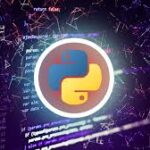The Power of Computer Vision: Understanding the World Through Images
Summary
“The Power of Computer Vision: Understanding the World Through Images” is a comprehensive introductory course designed for beginners interested in exploring the exciting field of computer vision. This course is ideal for those with no prior experience in computer vision or programming and aims to provide a robust foundation in understanding how computers can interpret and analyze visual data.
Key Learning Objectives
- Definition and Importance of Computer Vision:
- Understand what computer vision is and its significance in the broader context of artificial intelligence.
- Explore the diverse applications of computer vision, such as face recognition, biometrics, self-driving cars, and augmented reality.
- Fundamental Concepts:
- Learn about image representation and processing, which are essential for computers to interpret visual data.
- Understand different types of image features and descriptors that help in identifying and distinguishing various elements within an image.
- Image Classification and Object Recognition:
- Grasp the basics of how images are classified and how objects within images are recognized.
- Explore the techniques and algorithms used to perform these tasks.
Course Structure and Content
The course is divided into six modules, each focusing on a major topic in computer vision. These modules include:
- Image Representation and Processing:
- Introduction to how images are represented in a digital format.
- Techniques for processing these images to prepare them for further analysis.
- Image Features and Descriptors:
- Identification of various image features such as edges, corners, and textures.
- Understanding descriptors that capture important information about these features.
- Image Classification and Object Recognition:
- Basics of classifying images into categories based on their content.
- Techniques for recognizing and labeling objects within an image.
- Motion Analysis and Tracking:
- Study of how to analyze movement within a sequence of images.
- Methods for tracking moving objects over time.
- 3D Computer Vision:
- Introduction to techniques that allow for the interpretation of three-dimensional information from two-dimensional images.
- Applications of 3D computer vision in various fields.
Interactive Learning and Resources
- Interactive Tools and Platforms: Instead of traditional coding, the course uses interactive tools that allow learners to experiment with computer vision algorithms directly.
- Rich Resource Set: Access to extensive readings, code examples, and datasets to enhance understanding and provide practical experience.
- Assessments: Each module includes quizzes and assignments to reinforce learning and ensure comprehension of key concepts.
Ethical Implications and Limitations
- The course also addresses the ethical implications and limitations of computer vision technologies. This includes discussions on privacy concerns, potential biases in algorithms, and the responsible use of technology.
Target Audience
- Beginners in Computer Vision: Those new to the field who want to build a foundational understanding.
- Students and Professionals: Individuals in computer science, engineering, and related fields looking to enhance their knowledge and skills in computer vision.
- Curious Learners: Anyone interested in the capabilities of computers to interpret visual data and its real-world applications.
Course Outcomes
By the end of the course, participants will have achieved:
- A solid understanding of the core concepts and techniques in computer vision.
- Practical experience with computer vision algorithms through interactive tools.
- An appreciation of the vast potential and ethical considerations of computer vision technology.
- Preparedness for further study or career advancement in the field of computer vision.
This course aims to demystify the complexities of computer vision and provide learners with the knowledge and tools to understand how computers can see and interpret the world around them. Whether for academic advancement, career development, or personal interest, this course offers a valuable and comprehensive introduction to one of the most dynamic areas of artificial intelligence.
What you’ll learn
-
Define computer vision and explain its importance and applications
-
Describe the key concepts of image representation and processing
-
Identify the different types of image features and descriptors
-
Explain the basics of image classification and object recognition
Requirements
-
This course is intended for beginners who are interested in learning about computer vision.
-
No prior experience with computer vision or programming is required.
Description
Computer vision is the field of study that enables computers to see and understand the visual world. It is one of the most exciting and rapidly evolving areas of artificial intelligence, with applications ranging from face recognition and biometrics to self-driving cars and augmented reality. In this course, you will learn the fundamental concepts and techniques of computer vision, as well as how to apply them to real-world problems.
This course provides a comprehensive introduction to the field of computer vision. It covers the fundamental concepts of image representation and processing, image features and descriptors, image classification and object recognition, motion analysis and tracking, and 3D computer vision.
The course is structured into six modules, each covering a major topic of computer vision. Each module consists of video lectures, quizzes, and assignments. You will not need to write any code in this course, as you will use interactive tools and platforms that allow you to experiment with computer vision algorithms. You will also have access to a rich set of resources, such as readings, code examples, and datasets.
By the end of this course, you will have a solid foundation in computer vision. You will also gain a deeper appreciation of the power and potential of computer vision, as well as its ethical implications and limitations. Whether you want to pursue a career in computer vision, enhance your existing skills, or simply satisfy your curiosity, this course will help you achieve your learning goals.
Who this course is for:
- Beginners in computer vision
- Students and professionals in computer science, engineering, and related fields
- Anyone who is interested in learning how computers can see










